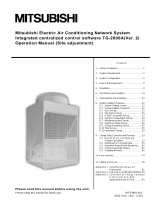Eaton 150 DHP manual ground and test devices are designed for insertion into the breaker compartment to gain access to the primary stationary contacts. It provides a convenient and safe means to:
- Ground a circuit for maintenance work
- Apply potential for cable testing
- Access both bus and line circuits for “phasing out” tests
The Eaton 150 DHP has several features that make it a valuable tool for electrical contractors, maintenance personnel, and other professionals who work with electrical systems. These features include:
- Rugged construction for long-lasting performance
- Easy to install and operate
Eaton 150 DHP manual ground and test devices are designed for insertion into the breaker compartment to gain access to the primary stationary contacts. It provides a convenient and safe means to:
- Ground a circuit for maintenance work
- Apply potential for cable testing
- Access both bus and line circuits for “phasing out” tests
The Eaton 150 DHP has several features that make it a valuable tool for electrical contractors, maintenance personnel, and other professionals who work with electrical systems. These features include:
- Rugged construction for long-lasting performance
- Easy to install and operate




















-
 1
1
-
 2
2
-
 3
3
-
 4
4
-
 5
5
-
 6
6
-
 7
7
-
 8
8
-
 9
9
-
 10
10
-
 11
11
-
 12
12
-
 13
13
-
 14
14
-
 15
15
-
 16
16
-
 17
17
-
 18
18
-
 19
19
-
 20
20
-
 21
21
-
 22
22
-
 23
23
-
 24
24
-
 25
25
-
 26
26
Eaton 50 DHP Instruction book
- Type
- Instruction book
Eaton 150 DHP manual ground and test devices are designed for insertion into the breaker compartment to gain access to the primary stationary contacts. It provides a convenient and safe means to:
- Ground a circuit for maintenance work
- Apply potential for cable testing
- Access both bus and line circuits for “phasing out” tests
The Eaton 150 DHP has several features that make it a valuable tool for electrical contractors, maintenance personnel, and other professionals who work with electrical systems. These features include:
- Rugged construction for long-lasting performance
- Easy to install and operate
Ask a question and I''ll find the answer in the document
Finding information in a document is now easier with AI
Related papers
-
Eaton DHP VR + Series Instruction book
-
Eaton 75 VCP-W-SGT Instruction book
-
Eaton Magnum DS Instruction Leaflet
-
Eaton DST-2-VR+ Series Instruction book
-
Eaton Simple Electrical ground and test device upper terminals - IB131007EN Owner's manual
-
Eaton 270VCP-W750(16) Instructions For Installation/Operation/Maintenance/Servicing
-
Eaton IL2C13761H11: Magnum kirk key interlock kit (2C12891G21) Owner's manual
-
Eaton medium-voltage switchgear Operating instructions
-
Eaton VCP-W Operating instructions
-
Eaton Magnum MRR1000 Operating instructions
Other documents
-
Siemens Vacuum Cleaner 38-3AH3 38 kV User manual
-
Siemens 38-3AH3 38 kV User manual
-
GW Instek tware Quick start guide
-
ABB AMVAC Operating instructions
-
Moxa UC-1200A Series User manual
-
 Mitsubishi Electronics TG-2000A User manual
Mitsubishi Electronics TG-2000A User manual
-
Cooper Lighting ASYX 2 - SP - Single Pendant Installation guide
-
Siemens E50001-U229-A289-X-US00B Operating instructions
-
Danfoss DHP-A,C,H,L Installation guide
-
Allen-Bradley 140G-R Series Installation Instructions Manual


























